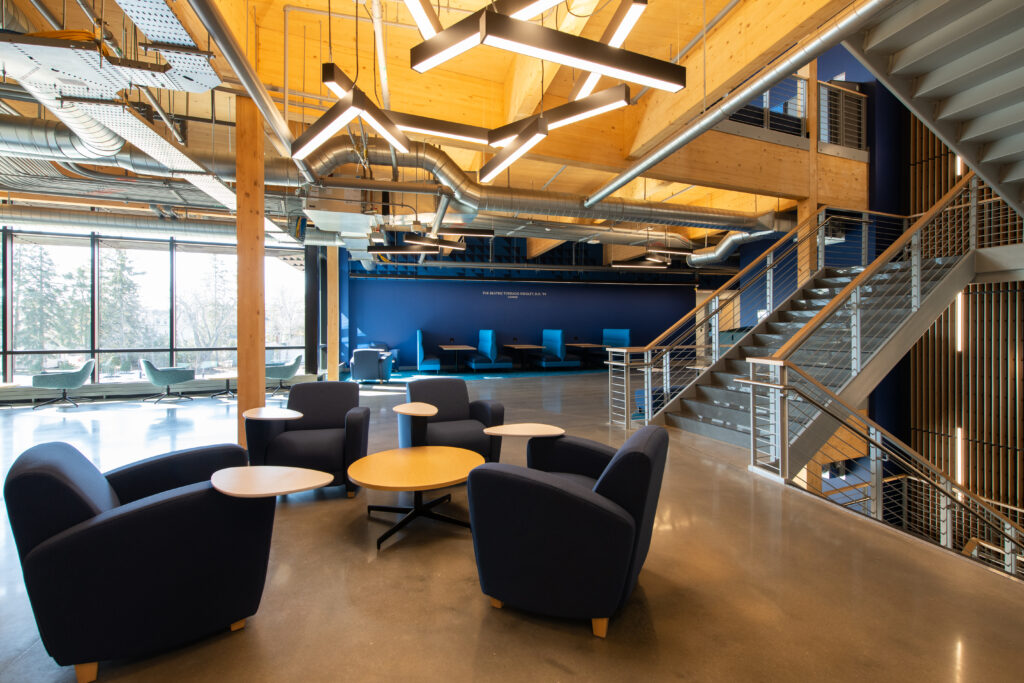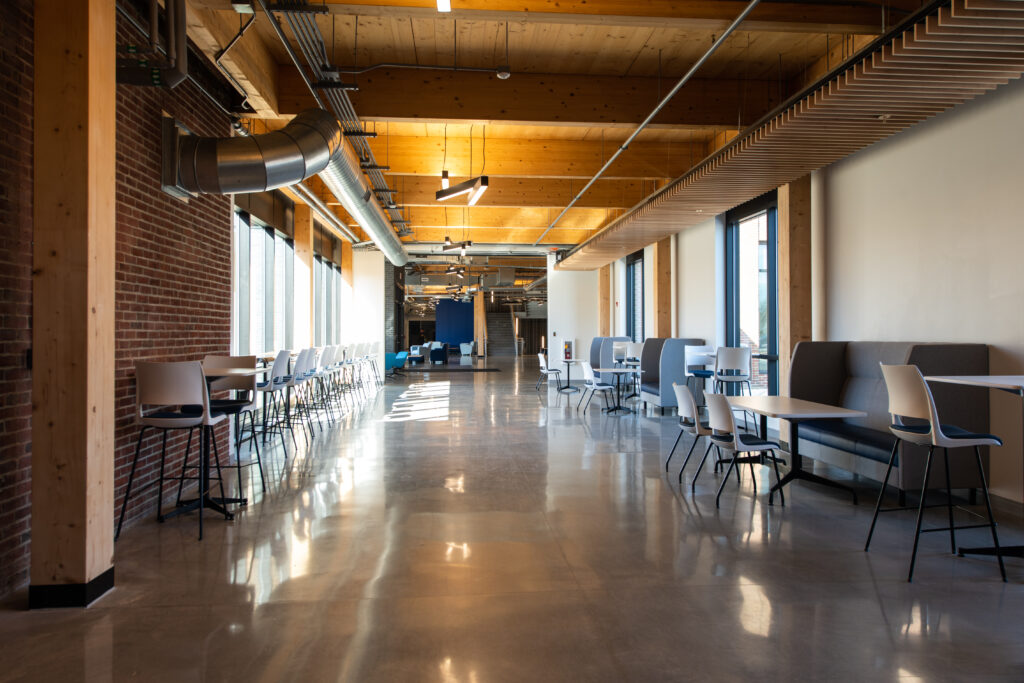by Alethea Cariddi
The use of mass timber is gaining traction in the construction industry for its numerous environmental, ethical, and economic benefits. University of Southern Maine held a Mass Timber Conference on March 5th, where I was invited to speak on a panel with representatives from USM, Bowdoin, and the Maine Green Schools Network. We explored these advantages in depth.
Environmental and Ethical Benefits of Mass Timber
Mass timber is quickly emerging as a key player in sustainable construction, due to its primary environmental benefit of lower manufacturing carbon footprint, when compared to more traditional building materials like steel and concrete. Mass timber’s ability to sequester carbon—a process where carbon dioxide is absorbed and stored by trees—further contributes to its eco-friendly profile. Not only does it reduce greenhouse gas emissions, but mass timber also represents a renewable resource, offering a long-term, sustainable alternative to more resource-intensive materials.
For Maine, the advantages of mass timber are even more significant. The state is the most forested in the U.S., and its robust forest product industry contributes between $8 to $10 billion annually to its economy, or about 5-7% of the state’s GDP. Using mass timber in construction projects could help stimulate our local economy by creating jobs and increasing demand for forest products, thus reinforcing Maine’s position as a leader in sustainable forestry.
The Decision to Build with Mass Timber
University of New England’s decision to incorporate mass timber into the construction of the Harold and Bibby Alfond Center for Health Sciences (HBACHS) was initially suggested by the project architect, SMRT. The building, with 112,000 gross square feet of space, features 45% to 50% mass timber or engineered lumber in its structure. The entire building could not be supported by mass timber due to the large spans required for certain areas.
The aesthetics of the finished product played a significant role in the decision-making process. The environmental benefits of mass timber were also central to the decision, as senior leaders recognize our responsibility to lead by example in adopting sustainable building practices.
Moreover, using mass timber in campus construction sends a powerful message about the importance of innovation and sustainability in higher education. This commitment not only benefits the environment but also sets a precedent that could influence the broader construction market, driving demand for sustainable materials and boosting Maine’s forest product industry.
Would We Do It Again?
The success of the HBACHS project has left UNE eager to explore further opportunities for mass timber construction. In fact, the institution is considering mass timber for its next residential building. This time, however, Campus Planning is considering use of panelized construction to avoid some of the challenges they faced in the initial project.
For educational institutions like the UNE and others in Maine, adopting these sustainable building practices not only enhances the campus environment, but also provides valuable lessons in environmental responsibility and innovation.



